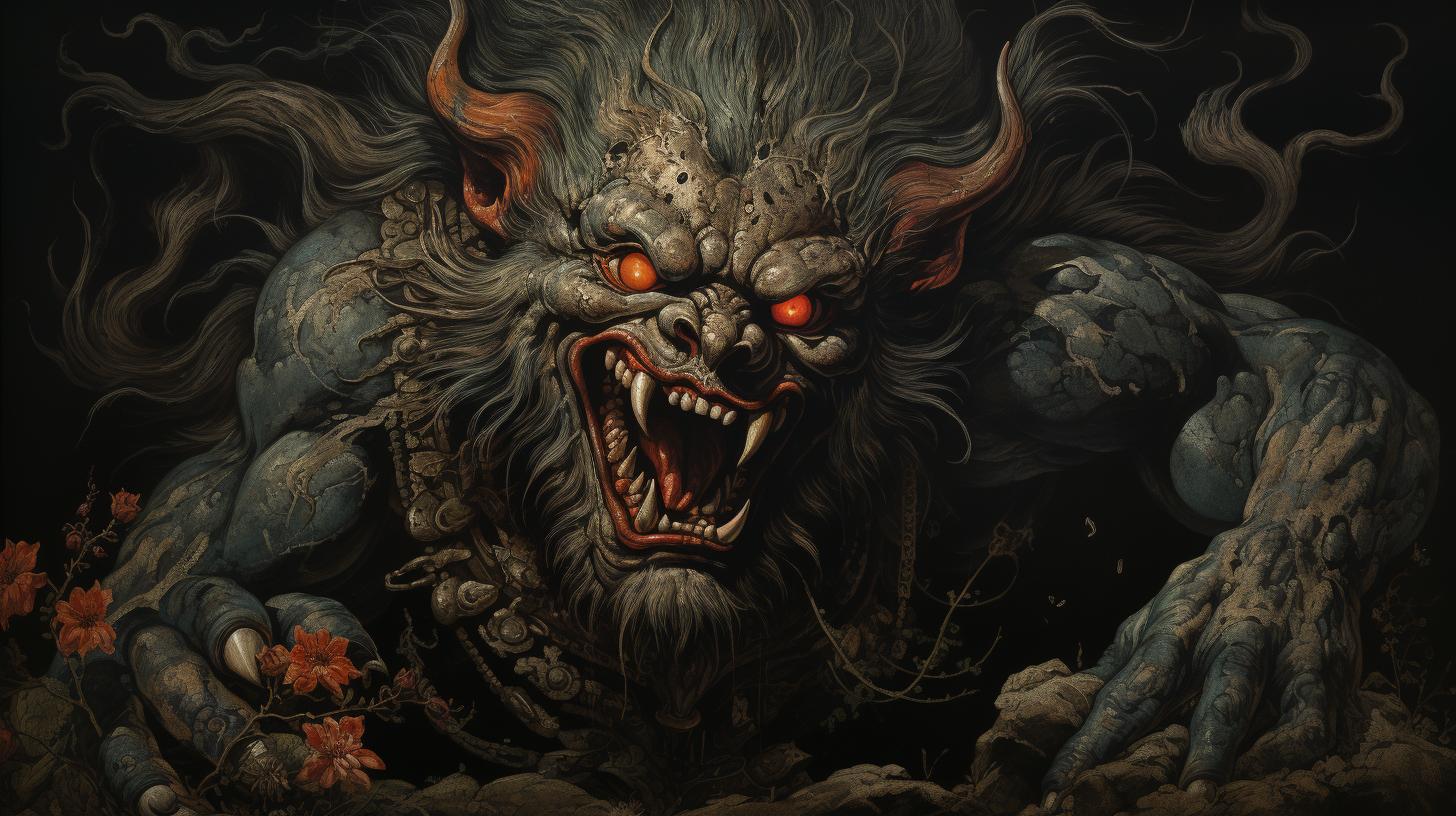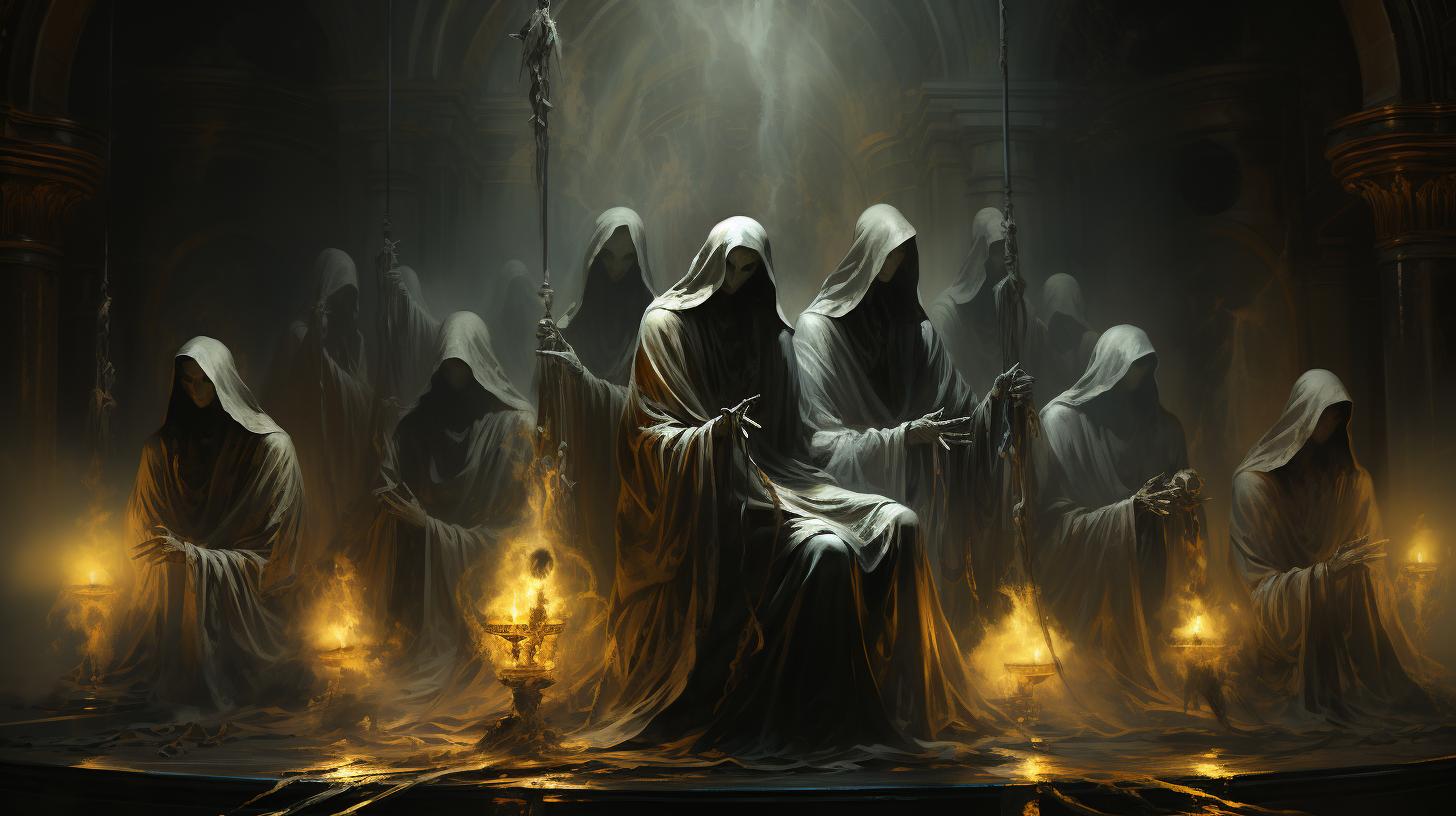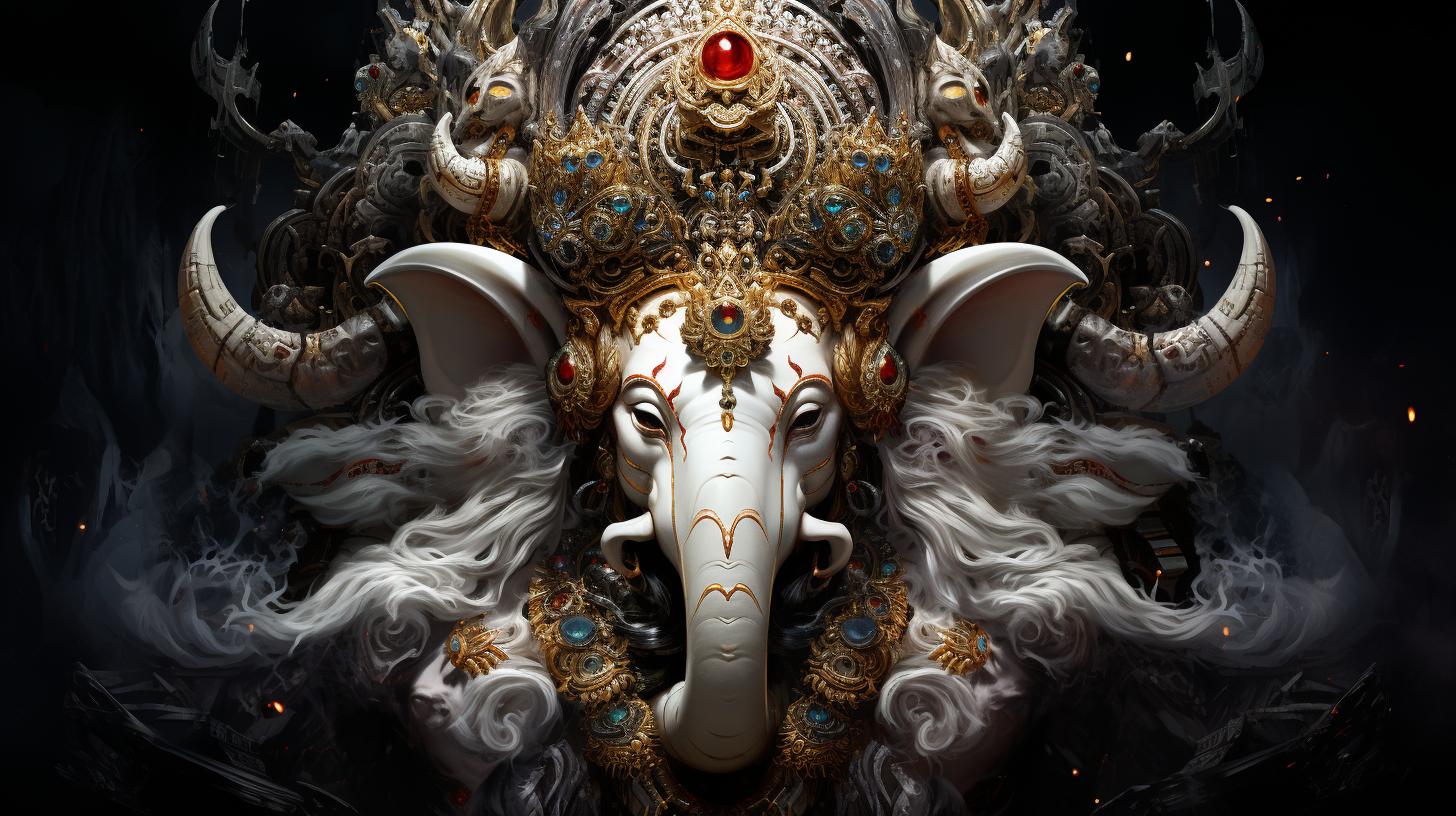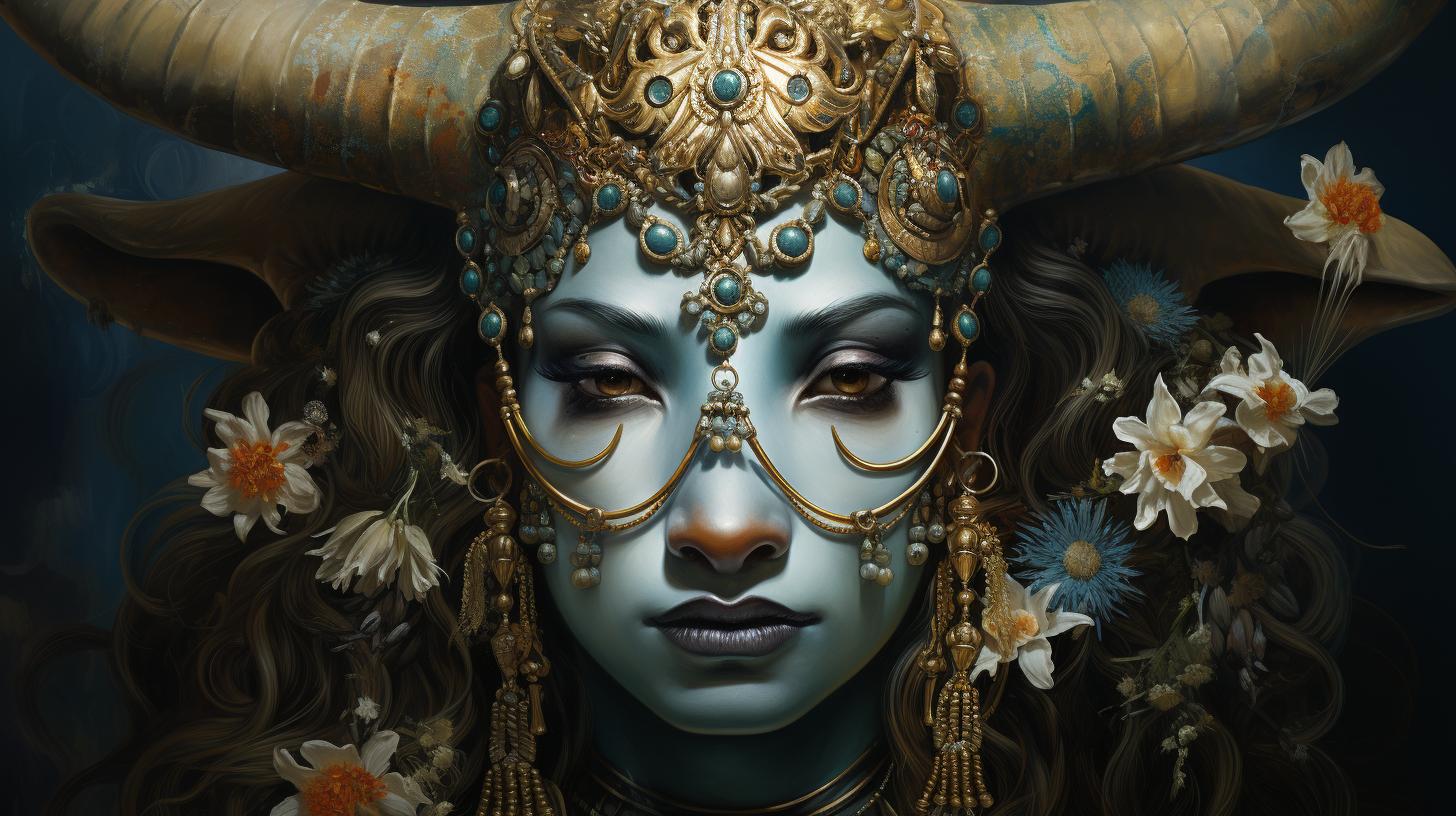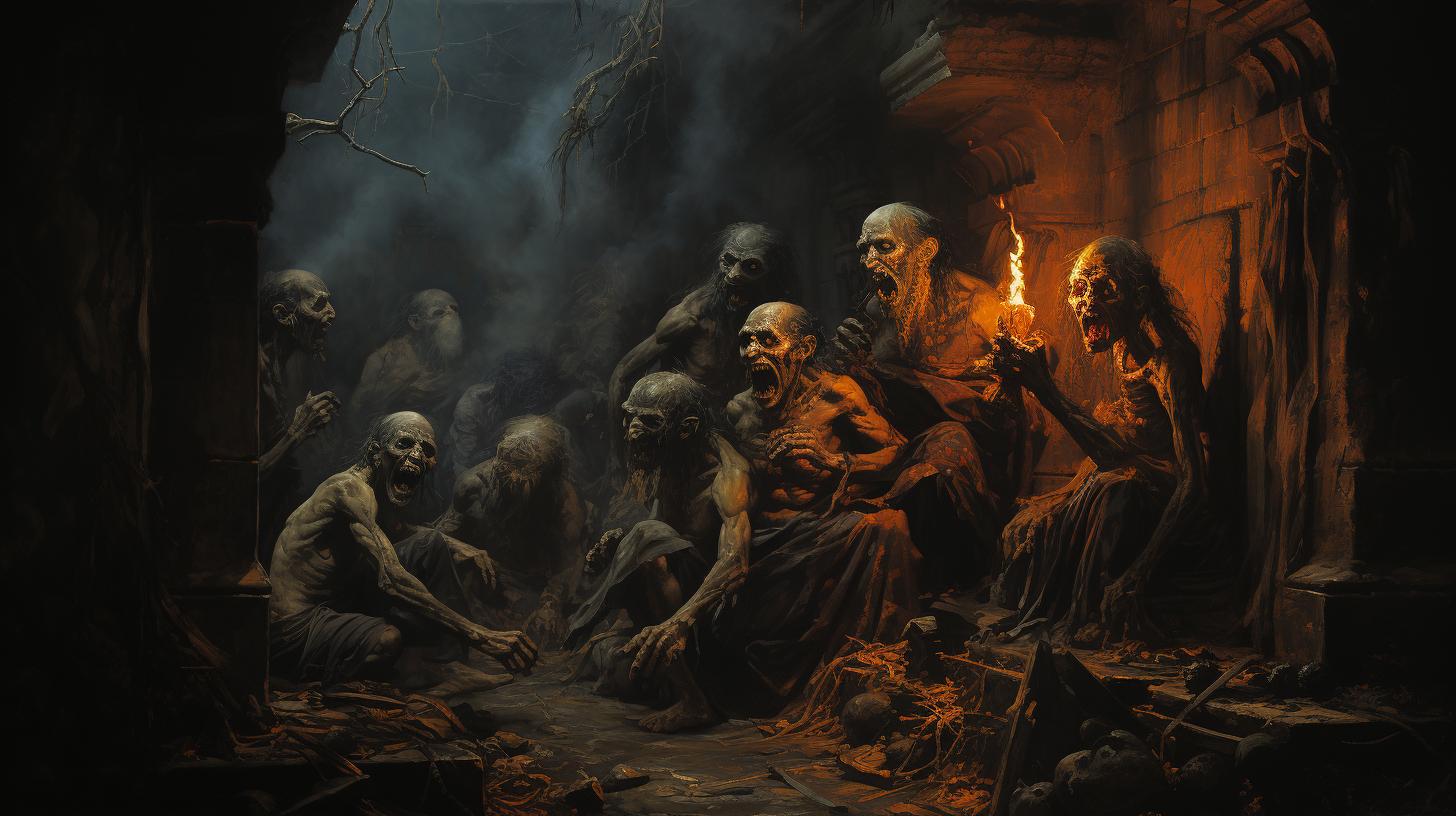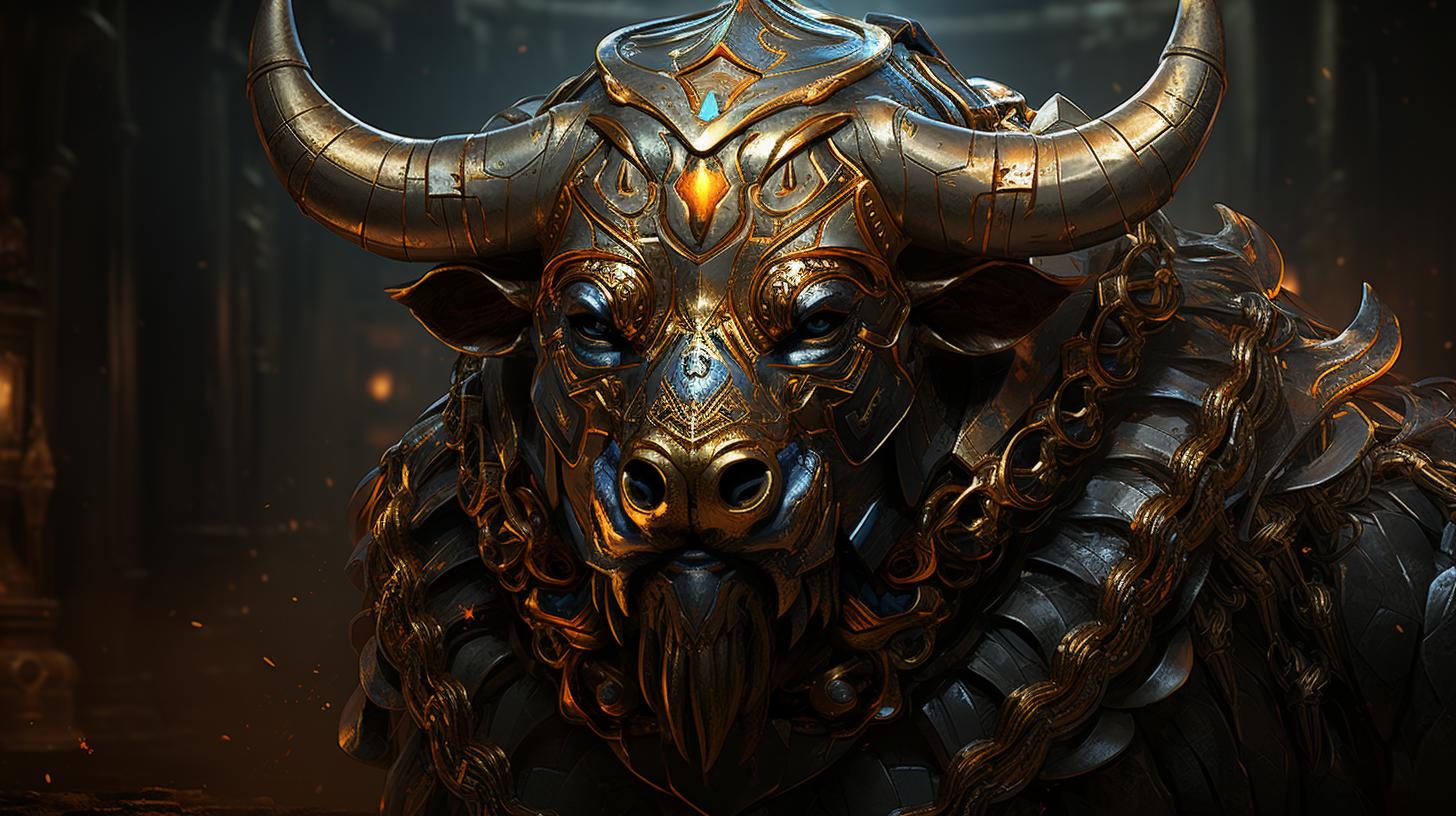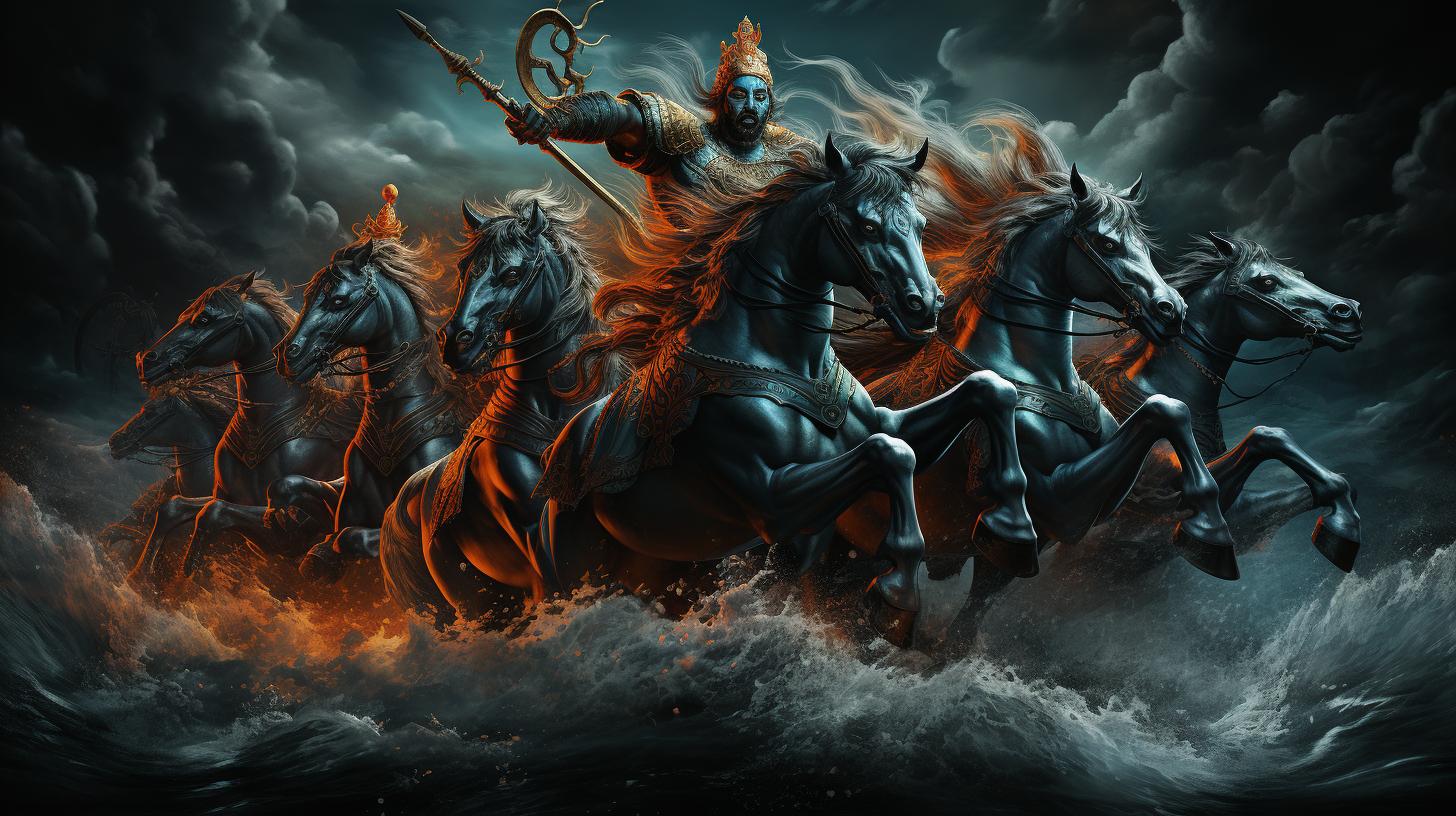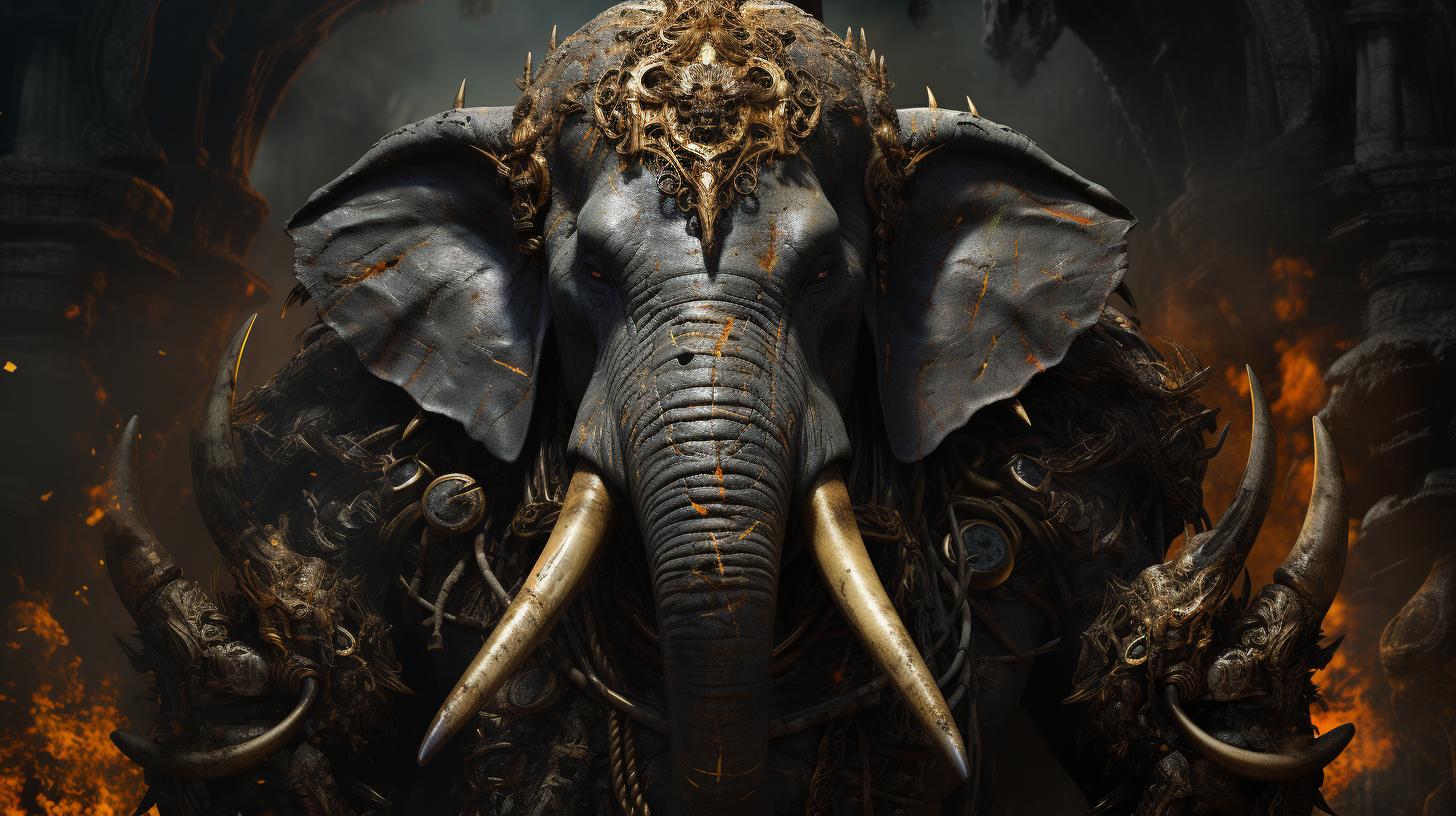Yali Hindu Mythology: A Fascinating Dive into Ancient Indian Folklore

Yali Hindu mythology is a fascinating glimpse into the rich folklore of ancient India. This mythical creature, depicted in the temple pillars of South India, holds great significance in Hindu mythology and serves as a symbol of power and protection.
With a unique combination of a lion, horse, and elephant, Yali is believed to embody natural forces and safeguard temples and their sacred paths. Throughout different temples in India, various representations of Yali can be found, showcasing its role as a guardian and its influence on traditional Indian architecture.
Overview of Yali Hindu Mythology
The Yali holds a significant place in Hindu mythology, captivating with its mythical presence. This revered creature is prominently depicted on temple pillars in the southern region of India and is revered as a guardian and protector.
Combining the majestic attributes of a lion, horse, and elephant, the Yali is believed to possess immense power and symbolize the wild and natural forces that exist in our world.
Within Hindu mythology, the Yali is considered a personification of rampant natural forces, entrusted with the responsibility of safeguarding temples and the paths that lead to them.
Its role as a protector is deeply rooted in the belief that the Yali possesses qualities surpassing those of lions or elephants, making it an ideal guardian against demonic forces and threats.
The Yali represents a fusion of divine forces and finds its artistic expression in various forms, primarily in the intricate motifs seen in traditional South Indian temple architecture. Similar to the significance of gargoyles in European architecture or leogryphs in Asian architecture, the Yali is employed to define and enhance the sacred spaces it adorns, leaving an indelible impression on the temple’s overall aesthetic.
As we delve into the enchanting realm of Yali Hindu mythology, we will explore the creature’s symbolic nuances, its physical characteristics, and its pervasive presence in Indian temples. Join us as we uncover the revered Yali and unravel the mysteries surrounding this captivating creature deeply embedded in the rich tapestry of Hindu mythology.
The Mythical Creature: Yali and its Symbolism
The Yali is a fascinating creature in Hindu mythology, representing a unique blend of various animals and embodying powerful symbolism. This mythical creature possesses distinct physical characteristics and holds significant symbolic significance within Hindu culture.
The Physical Characteristics of Yali
The Yali is a fantastical combination of a lion, horse, and elephant, showcasing a visually captivating amalgamation of these three majestic beings. It features the body of a lion, symbolizing strength and courage, along with the head of an elephant, representing wisdom and intelligence.
The horse aspect symbolizes energy, speed, and vitality. This fusion of animal traits creates a captivating visual representation of power and prowess.
The Symbolic Significance of Yali in Hindu Mythology
Beyond its striking appearance, the Yali holds profound symbolic significance in Hindu mythology. It is believed to personify rampant natural forces, embodying their uncontrollable energy and wildness. The Yali’s primary role is to protect temples and the sacred pathways leading to them, making it a powerful guardian figure.
Its presence represents the belief in divine protection and the need to defend sacred spaces from malevolent forces.
Moreover, the Yali symbolizes the triumph of good over evil and the balance between opposing forces. Its composite form of different creatures symbolizes the harmony and unity of diverse elements, reflecting the interconnectedness of the natural world and the divine order.
The Yali’s symbolism extends beyond physical protection, encompassing spiritual and cosmic realms as well.
The Yali’s awe-inspiring symbolism has made it an integral part of Indian temple architecture and an enduring cultural icon. Its representations on temple pillars and motifs serve as reminders of the divine protection and the eternal power that exists in the universe.
Yali in Indian Temples
Yali, the mythical creature, holds significant prominence in Indian temple architecture and plays a vital role in safeguarding these sacred structures. Let’s explore the two key aspects of Yali in Indian temples: Yali Pillars and Yali motifs in South Indian temple architecture.
Yali Pillars: Guardians of the Temples
The Yali Pillars act as guardians, stationed at the entrance of temples, symbolizing their protective role. These pillars are intricately carved, depicting the fierce and majestic form of Yali. With their imposing presence, they stand as guardians against any malevolent forces, warding off evil from entering the temples.
Yali Motifs in South Indian Temple Architecture
In addition to the Yali Pillars, Yali motifs are a common feature in South Indian temple architecture. These motifs adorn the walls, columns, and ceilings of the temples, adding a touch of artistic grandeur.
The intricate stone carvings depict various forms of Yali, showcasing different heads and postures.
The Yali motifs not only serve as decorative elements but also contribute to the architectural storytelling and symbolism.
They exemplify the harmonious integration of art, culture, and spirituality within the temple premises.
The temples in South India, such as the Meenakshi Amman Temple in Madurai, Tamil Nadu, the Vittala Temple in Hampi, Karnataka, the Ananthasayana Temple in Ananthasayanagudi, Karnataka, and the Mukteshvara Temple in Bhubaneshwar, Odisha, bear witness to the beauty and significance of Yali motifs in their architecture.
These temples stand as testaments to the rich heritage and cultural legacy of Yali Hindu mythology, inspiring awe and reverence among worshippers and visitors alike.
Types of Yali Representations
The Yali, a mythical creature in Hindu mythology, is represented in various forms in temples across India. Let’s explore the different types of Yali representations:
Gaja Vyala: Yali with an Elephant Head
Gaja Vyala is a unique form of Yali that features an elephant head.
It embodies the strength and grace of an elephant, symbolizing power and protection.
Simha Vyala: Yali with a Lion Head
Simha Vyala is another form of Yali that showcases a lion head. It represents courage, bravery, and regality, embodying the majestic qualities of a lion.
Ashva Vyala: Yali with a Horse Head
Ashva Vyala is a Yali form depicted with a horse head.
This representation signifies speed, agility, and vitality, symbolizing the swift movements of a horse.
Nir Vyala: Yali with a Human Head
Nir Vyala is a unique Yali form where it bears a human head. This representation reflects the human connection and its significance in the grand scheme of mythology and protection.
Shvana Vyala: Yali with a Dog Head
Shvana Vyala is a Yali form characterized by a dog head.
It conveys loyalty, vigilance, and companionship, embodying the qualities associated with dogs.
These different types of Yali representations can be found adorning temples across India, showcasing the rich diversity and intricate artistic expressions within Hindu mythology.
Yali’s Role as Protector
Yali, as a mythical creature in Hindu mythology, holds a significant role as a powerful protector against evil forces. Throughout the ages, Yali has been revered for its ability to ward off malevolent beings and safeguard sacred spaces.
Let’s explore two aspects of Yali’s protective role in Hindu traditions.
Yali’s Role in Warding off Evil Forces
One prominent aspect of Yali’s role as a protector is its capacity to ward off evil forces. It is believed that the presence of Yali in temples and its depiction on pillars act as a formidable barrier against negative energies and malefic entities.
With its ferocity and superior strength, Yali is regarded as a guardian that shields devotees and sacred spaces from harm.
Devotees place their faith in Yali, seeking its divine protection, especially during religious rituals and ceremonies.
Yali’s representation instills a sense of security and invokes a spiritual shield against any potential threats that may arise from the unseen realms.
Yali and Makara: Mythical Companions in Protection
In Hindu mythology, Yali is often depicted standing on the back of another mythical creature called Makara.
This symbiotic relationship signifies a joint effort in safeguarding temples and their surroundings.
Makara, with its half-fish and half-beast form, represents water and is associated with the divine. By combining the prowess of Yali with the mythical attributes of Makara, a comprehensive defense is formed against both terrestrial and aquatic dangers.
The presence of Yali standing on Makara exemplifies a harmonious blend of natural elements and divine forces united in protection. This combination serves as a visual reminder of the vigilance required to maintain the sanctity and safety of sacred spaces.
- Yali and Makara together symbolize the balance between land and water, protecting temples from both earthly and supernatural threats.
- Devotees revere this powerful alliance, recognizing their collective strength in preserving the spiritual essence of the temple premises.
- Through intricate sculptures and artistic representations, the bond between Yali and Makara is visually reinforced, fostering a sense of awe and devotion among worshippers.
The role of Yali as a protector against evil forces, combined with its mythical companionship with Makara, showcases the deep-rooted belief in the power of divine guardianship and serves as a testament to the rich symbolism embedded within Hindu mythology.
Yali Hindu Mythology in Different Temples
Yali Hindu mythology holds a significant presence in various temples across India. These temples boast exquisite sculptures and intricate depictions of Yalis, showcasing the rich cultural heritage and religious symbolism associated with these mythical creatures.
Famous Temples Featuring Yali Sculptures
Meenakshi Amman Temple in Madurai, Tamil Nadu
The Meenakshi Amman Temple in Madurai, Tamil Nadu, stands as a remarkable example of Yali sculptures. Its grand architecture showcases Yalis guarding numerous entrances, pillars, and towers, illustrating their role as protectors of this sacred space.
Vittala Temple in Hampi, Karnataka
The Vittala Temple in Hampi, Karnataka, is renowned for its exceptional Yali sculptures. Visitors can witness the awe-inspiring sight of Yalis adorning the temple’s walls, pillars, and ceilings, adding a touch of magnificence to this architectural marvel.
Ananthasayana Temple in Ananthasayanagudi, Karnataka
The Ananthasayana Temple in Ananthasayanagudi, Karnataka, houses captivating Yali sculptures, showcasing their artistic and symbolic significance. These sculptures provide a glimpse into the mythical world and the divine presence in this sacred place.
Mukteshvara Temple in Bhubaneshwar, Odisha
The Mukteshvara Temple in Bhubaneshwar, Odisha, reveals the splendor of Yali sculptures intricately carved on its walls and pillars. These sculptures not only enhance the temple’s aesthetic appeal but also serve as guardians, protecting devotees who visit this sacred site.
These famous temples, among others in India, beautifully capture the essence of Yali Hindu mythology through their remarkable Yali sculptures. Each temple showcases unique interpretations of these mythical beings, providing a deeper understanding of their role and significance in the Hindu tradition.
The Influence of Yali Hindu Mythology on Indian Culture
The rich mythology and symbolism surrounding the Yali creature have had a profound influence on Indian culture. Throughout history, Yali has left an indelible mark on various aspects of Indian society, including art, architecture, and religious practices.
1. Art and Sculpture: Yali’s unique blend of animal features and its association with protection and power has made it a popular subject in Indian art and sculpture. Artists have depicted Yali in intricate carvings, intricate stone sculptures, and vibrant paintings, showcasing its significance in Indian artistic traditions.
2. Architectural Marvels: Yali’s presence can be particularly observed in the temples of South India. These awe-inspiring structures utilize Yali motifs as guardians and symbols of strength, subtly incorporating them into the overall design.
Yali pillars stand tall, symbolizing protection and divinity, while their intricate details add an enchanting touch to the temple architecture.
3. Religious Significance: Yali’s role as a protector and defender of temples carries deep religious significance.
Devotees believe that the presence of Yali wards off evil forces and safeguards the spiritual sanctity of the sacred spaces. The belief in Yali’s protective powers has become an integral part of Indian religious practices and rituals.
4. Cultural Identity: Yali’s symbolism and representation have become an essential part of India’s cultural identity. It serves as a testament to the country’s rich mythological heritage and artistic prowess. Yali motifs and sculptures are not merely decorative elements but serve as reminders of India’s ancient wisdom and spiritual traditions.
5. Tourism and Heritage: Yali’s influence on Indian culture extends to its role in promoting tourism and preserving heritage. The exquisite Yali-adorned temples attract tourists from all over the world, fascinated by the intricate craftsmanship and the stories behind these mythical creatures.
Yali’s presence adds to the allure of Indian heritage sites, contributing to their preservation and recognition.
The enduring influence of Yali Hindu mythology on Indian culture showcases the deep-rooted connection between folklore, spirituality, and artistic expression.
It serves as a powerful reminder of the captivating narratives and artistic brilliance that have shaped India’s cultural landscape throughout the centuries.
.












